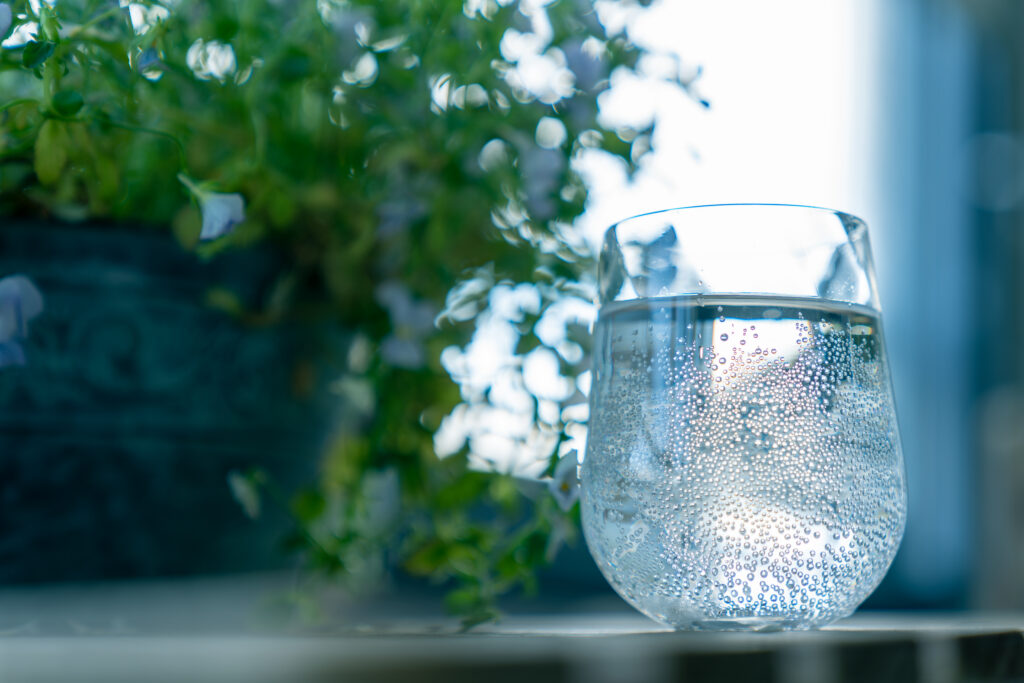
Sparkling water has become a popular beverage in Australia, offering a refreshing and bubbly alternative to still water. Whether it’s a fun addition to your hydration routine or a key ingredient in your favourite mocktails, sparkling water’s fizzy appeal is undeniable. But what exactly is sparkling water, and how does it differ from other carbonated beverages? In this article, we’ll explore the various types of sparkling water, its health benefits, potential downsides, and how Crystella’s sparkling water systems provide a sustainable, convenient solution for enjoying this refreshing drink.
Sparkling water is essentially water that contains dissolved carbon dioxide gas, creating its characteristic bubbles. However, not all sparkling waters are created equal. There are several different types, each with its own unique properties:
This type of sparkling water comes from natural springs and is naturally carbonated due to underground geological processes. It also contains a range of minerals like calcium, magnesium, and potassium, which can contribute to its distinct taste and potential health benefits. Brands like San Pellegrino and Beloka offer sparkling mineral water sourced from pristine environments.
Also known as club soda, soda water is artificially carbonated, meaning carbon dioxide is added during the manufacturing process. It often contains added minerals like sodium bicarbonate or potassium sulphate, which give it a slightly salty taste. Soda water is commonly used as a mixer in cocktails due to its neutral flavour.
Seltzer is another type of artificially carbonated water, but it typically doesn’t have added minerals, making it taste more like regular still water. Some seltzers come flavoured with natural fruit essences, making them a popular choice for those looking to replace sugary soft drinks with a healthier option.
Though technically a sparkling beverage, tonic water is in a category of its own due to the presence of quinine, which gives it a bitter flavour. It is often sweetened and used in cocktails like gin and tonic.
Most sparkling water is made by dissolving CO2 in still water, creating the signature fizz. However, in the case of sparkling mineral water, the carbonation occurs naturally as the water flows through mineral-rich geological layers, picking up CO2 along the way.
Many people wonder whether sparkling water is just as hydrating and healthy as still water. The good news is that plain, unsweetened sparkling water can offer several health benefits, making it a fantastic alternative to sugary sodas.
Sparkling water is just as hydrating as still water. In fact, studies suggest that the bubbles in sparkling water can make it more enjoyable to drink, which may encourage people to drink more water throughout the day. This is particularly beneficial for those who struggle to meet their daily water intake.
The carbonation in sparkling water has been shown to aid digestion by stimulating the production of gastric juices. This can help alleviate symptoms of indigestion and bloating, making sparkling water a good choice after meals. Some research also suggests that sparkling water may help relieve constipation and improve overall digestive comfort.
For those looking to manage their weight, sparkling water can be a helpful tool. The bubbles create a sensation of fullness, which may reduce overeating or snacking. Additionally, replacing high-calorie sugary drinks with sparkling water can significantly cut down on unnecessary calorie intake.
Mineral-rich sparkling water, such as those containing calcium and magnesium, can contribute to bone health. Calcium is essential for strong bones and teeth, while magnesium aids in the absorption of calcium, promoting better bone density.
Unlike soft drinks or juices, unsweetened sparkling water contains no calories, sugars, or artificial sweeteners, making it a healthier choice. However, it’s important to check labels, as some flavoured varieties may contain hidden sugars.
While sparkling water offers several health benefits, there are some potential downsides to consider.
For some people, the carbonation in sparkling water can lead to bloating and gas. This is particularly common for individuals with digestive issues such as GERD (gastroesophageal reflux disease), where the gas can aggravate symptoms like acid reflux.
While plain sparkling water is much better for your teeth than sugary sodas, the carbonation can still make it slightly more acidic than still water. Over time, this acidity could potentially weaken tooth enamel. To minimize this risk, it’s recommended to alternate sparkling water with still water and maintain good oral hygiene.
It’s important to distinguish between sparkling water and other carbonated beverages like soda water, tonic water, and soft drinks:
Crystella’s sparkling water systems provide an eco-friendly, cost-effective solution for those looking to enjoy sparkling water at home or in the workplace. With Crystella, you can enjoy chilled sparkling water on demand, eliminating the need for single-use plastic bottles and cutting down on waste. Our systems are designed with energy efficiency in mind, making them a sustainable choice for both residential and commercial environments.
With Crystella, you’re not just making a healthy choice for yourself – you’re making a responsible choice for the environment.
Sparkling water is a refreshing and healthy beverage choice that offers numerous benefits, from improved hydration to aiding digestion and supporting weight management. While there are minor downsides to consider, such as potential bloating and the impact on dental health, these can be managed with moderation and good habits.
For those looking to make sparkling water a regular part of their lifestyle, Crystella’s sparkling water systems provide a convenient, eco-friendly solution. Whether you’re at home, in the office, or running a hospitality business, Crystella’s systems ensure you have access to premium sparkling water on tap.
Stay hydrated, stay healthy, and enjoy the bubbles with Crystella.
4.9-Stars
based on 89 Reviews